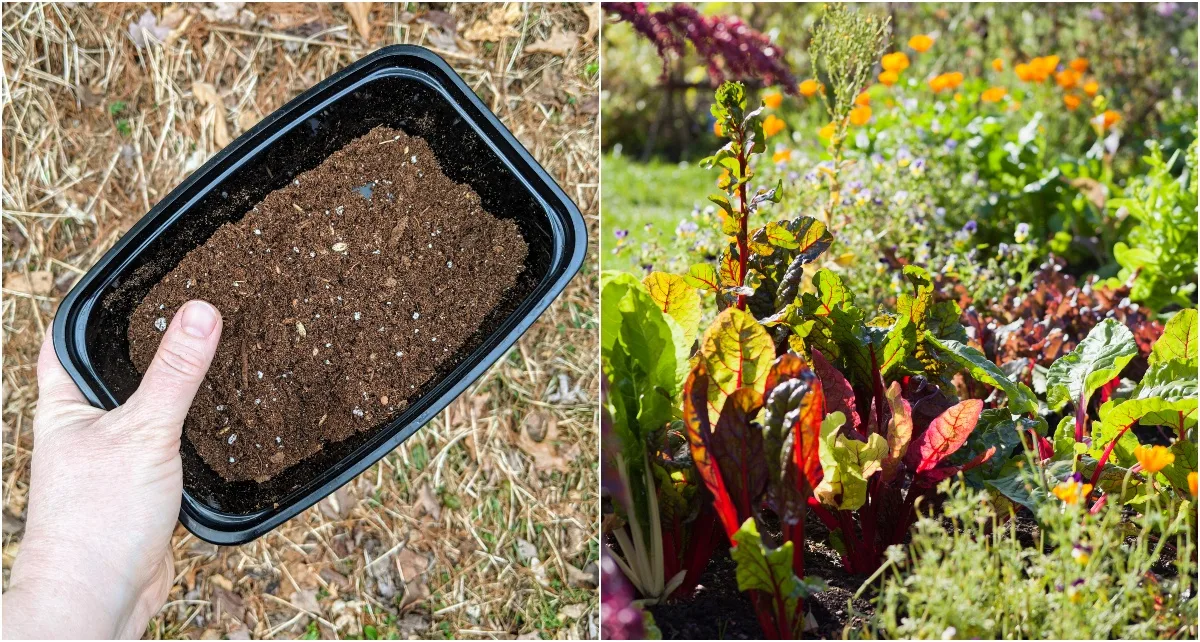
The amazing thing about seeds is that these tiny little specks contain everything needed to create a whole new plant.
With a little moisture and some time in the dirt, a seed transforms into a seedling. And they can wait for a few years before doing so. But not forever.
Ultimately, this leads to a common gardening problem – what do you do with the seed packets that are a few years past their packed-for date?
Easy, plant a chaos garden.
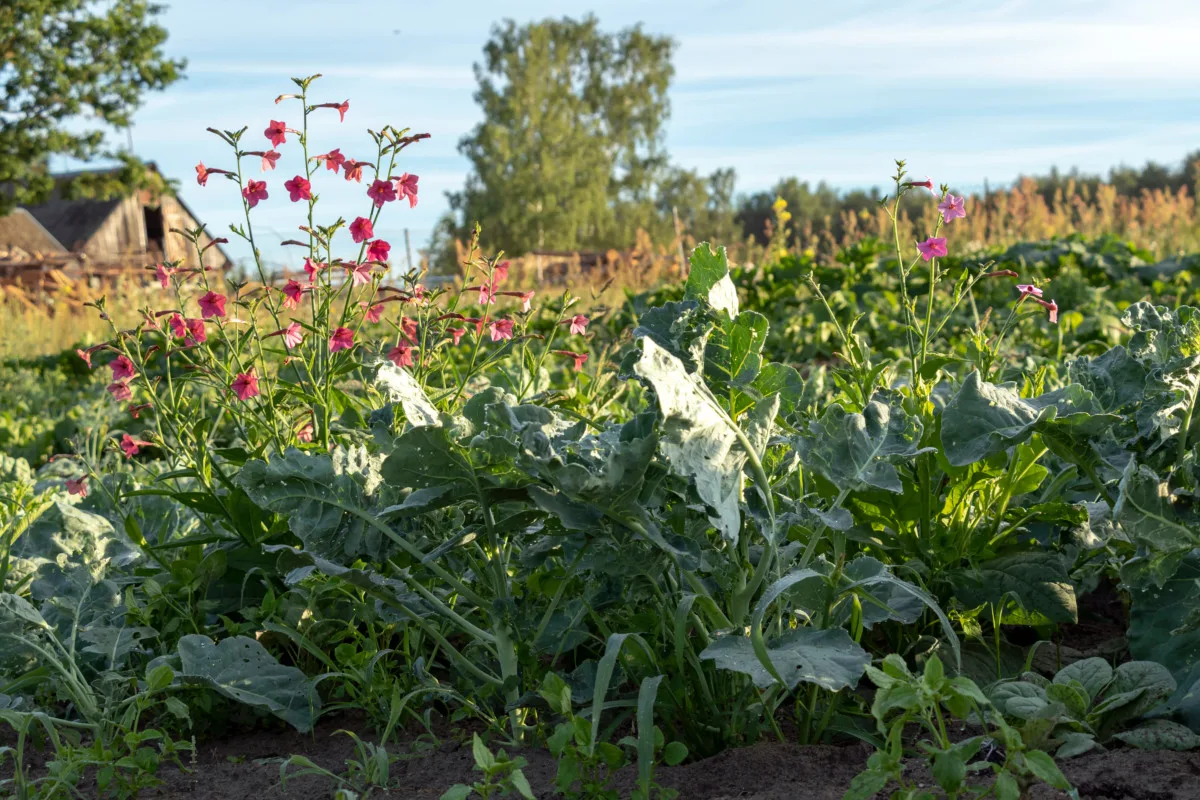
If you’ve been gardening for any length of time, then you know two things.
- There are plenty of flowers and vegetables where you will rarely use up an entire packet of seed.
- Germination rates decline the older the seeds get.
These two factors often lead to a collection of opened seed packets that will never get used up. Even if you use more seeds next year, and perhaps the year after that, you will still have seeds leftover. And their viability begins to suffer after a couple of years.
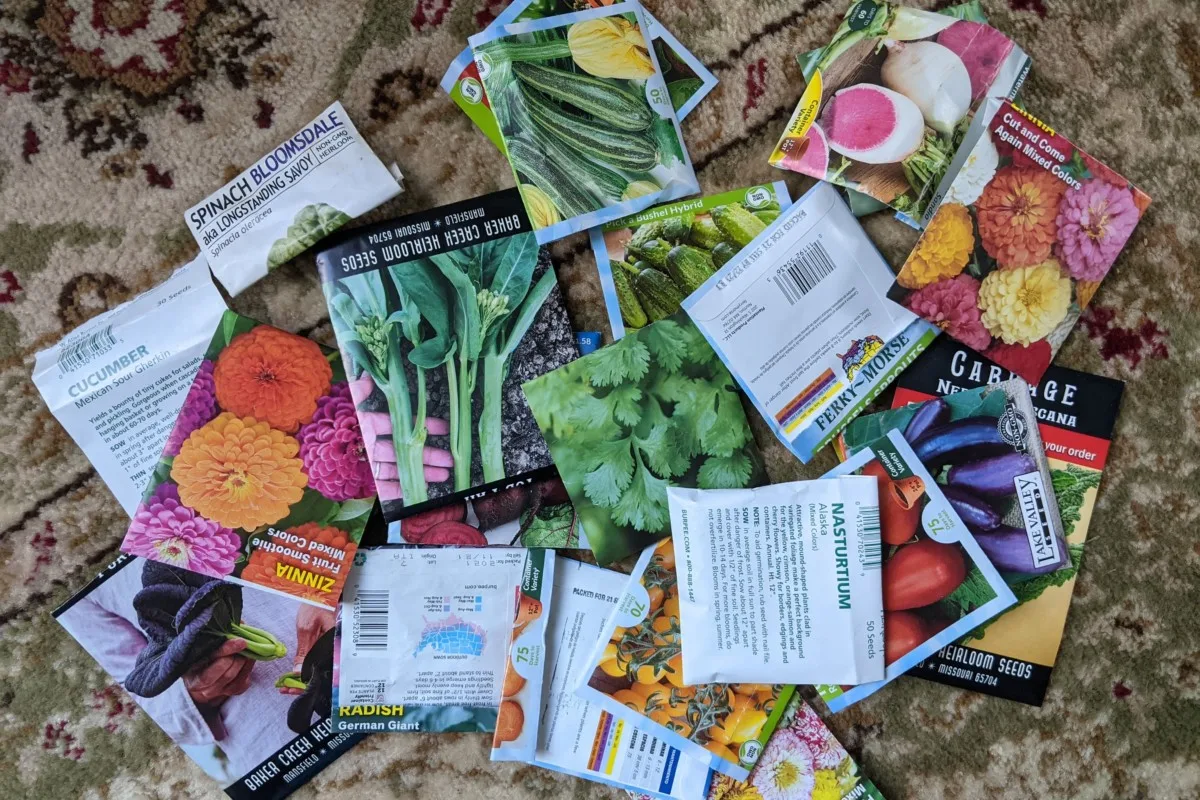
But not this year.
This year we’re going to gather up all of our older seeds and try something new. This year we’re going to grow a chaos garden.
Okay, sounds great.
What’s a chaos garden?
A chaos garden is a bit of luck and experimentation rolled into one patch of dirt. The basic idea is to combine all of your leftover seeds that are past the point of predictable germination and then plant them and see what comes up.
It’s a fun way to use up seeds that would otherwise be thrown out. And it’s a great way to play it fast and loose with some of your garden plans this year.
After spending hours pouring over seed catalogs and plotting out your garden, then painstakingly starting seeds, there is something incredibly freeing about leaving a patch of soil all up to chance.
Grab all of your old seed packets, and I’ll walk you through the process.
Okay, but all of my old seeds?
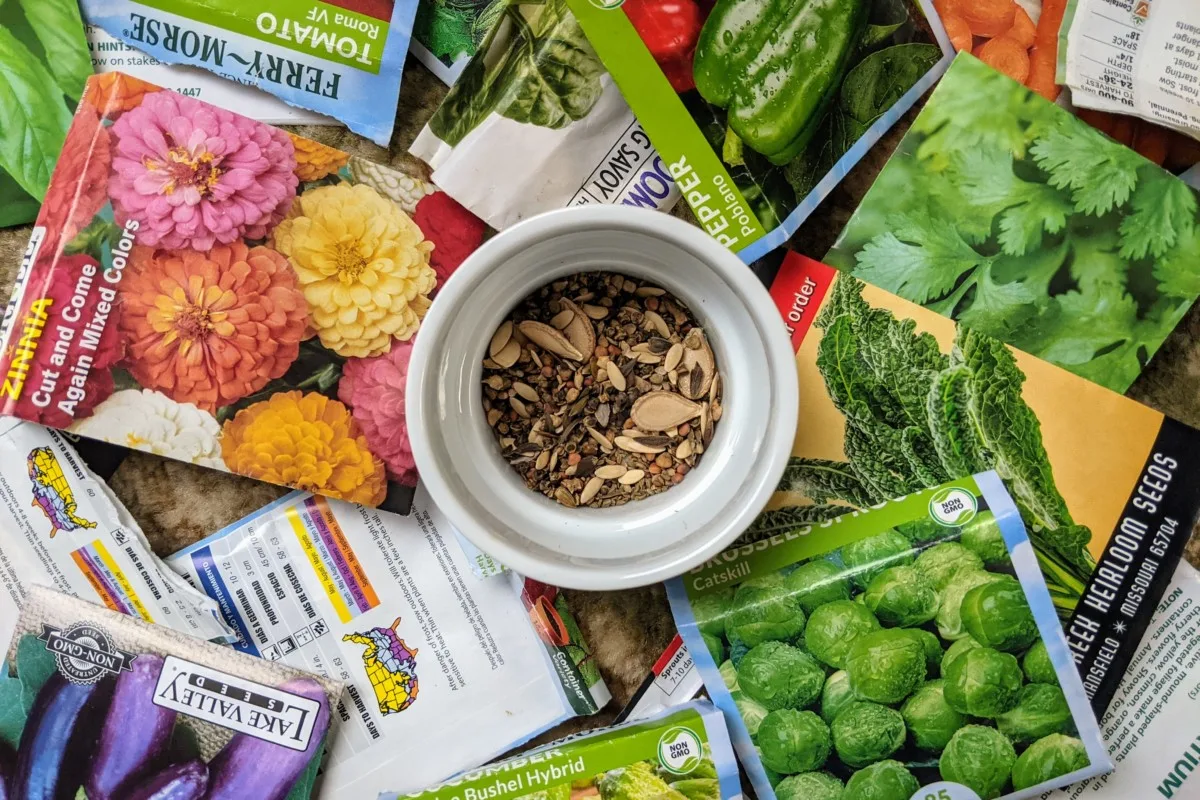
Yes! Be they vegetable, flower or fruit grab all of them. Don’t forget all of the seeds that have worked their way out of the packets and are gathered down in the corner of the drawer, bin, bag or wherever you store your seeds.
The idea is to mix everything together to create a diverse area of plants growing in one area. And because they’re older seeds, you have no idea which ones will germinate and which ones won’t. It’s all up to chance and that great creature of chaos herself – Mother Nature.
A Boost for Success
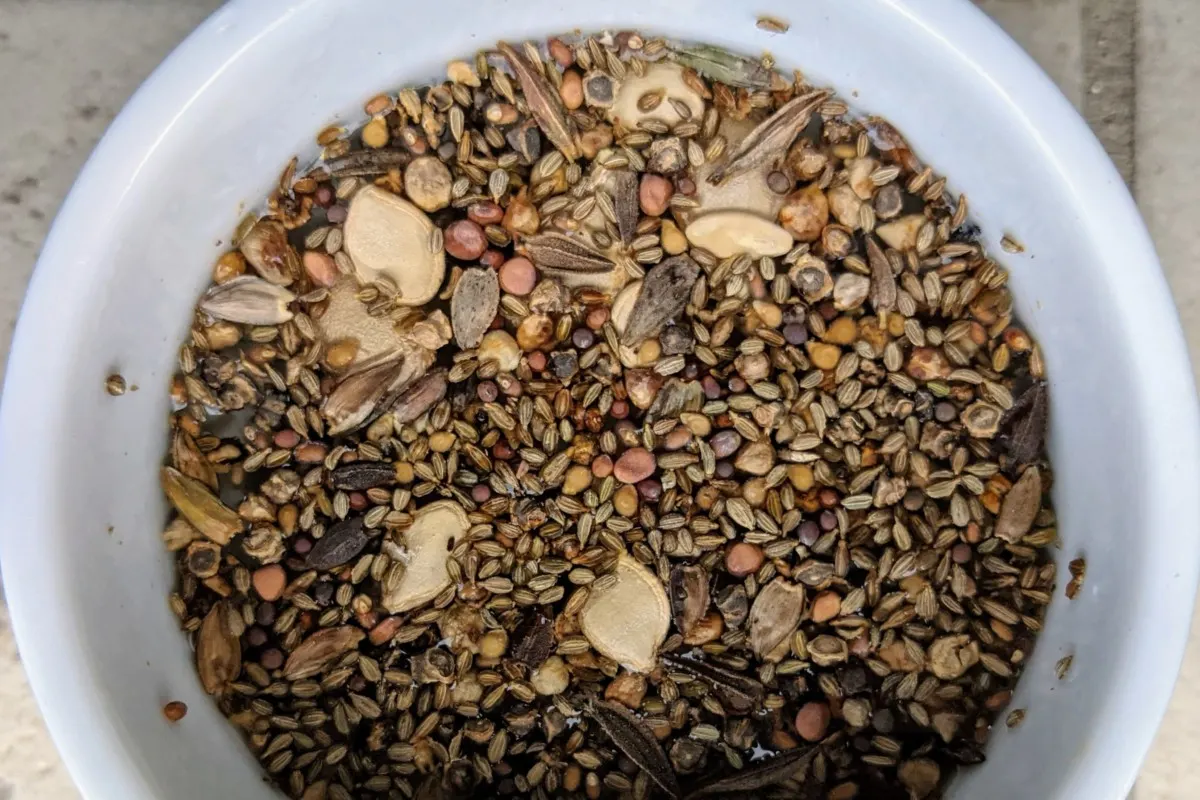
Mix all of the seeds in a bowl. We’re going to make sure we give our old seeds the best chance at germinating by soaking them before we plant them.
Pour enough warm water in the bowl to cover the seeds by an inch. Give them a good swish around the water, and then let the bowl stand for twenty-four hours.
While You Wait – Here’s Where to Plant
If you want to give up a portion of your normal garden space to your chaos garden, by all means, go ahead. You’ll probably have better luck with well-tended soil. However, you don’t have to do that to enjoy a chaos garden; in fact, you don’t need prepared soil at all.
You’ve got a few options for sowing your chaos seeds.
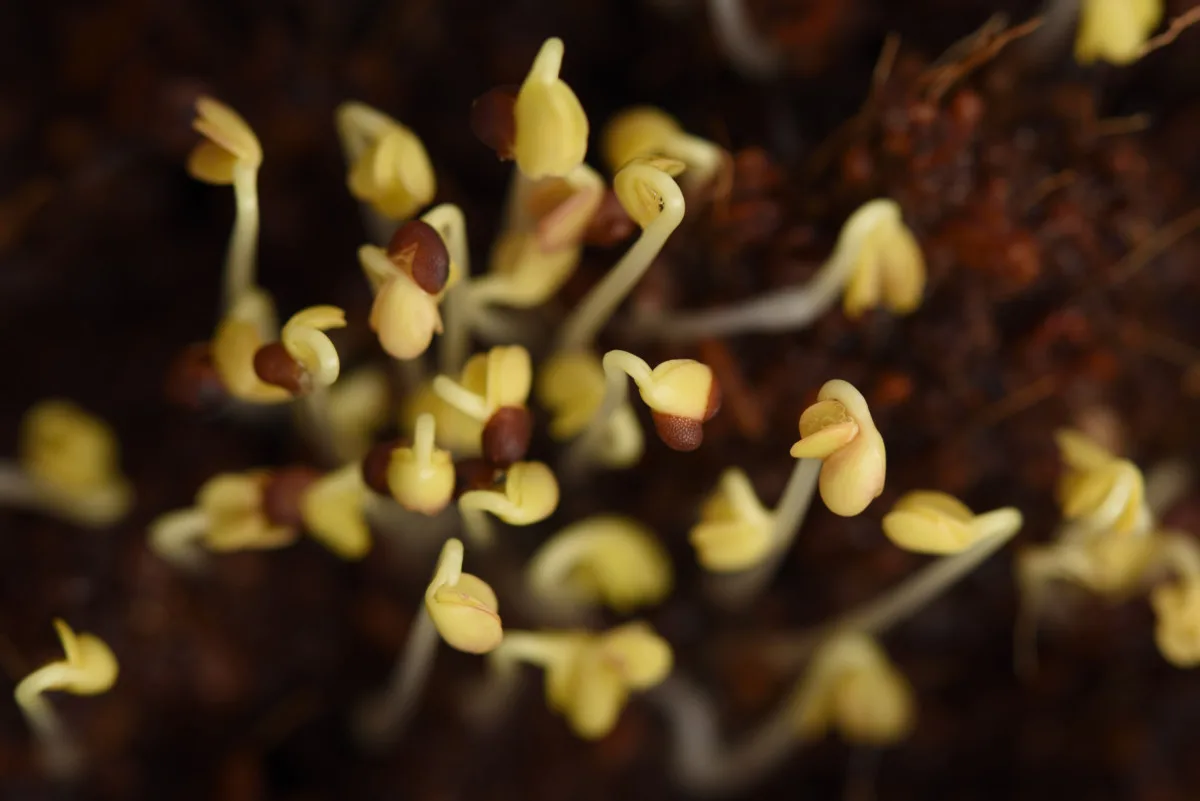
- Using a garden rake or hoe, you can gently break up the very top layer of soil to sow your chaos garden. This works especially well on a bare patch of yard.
- Go no-dig! Instead of breaking up the soil, lay down a layer of compost a couple of inches thick. Once your chaos garden is established, the plants will grow past the compost layer into the soil below.
- Got a spare raised bed? Why not dedicate one of your raised beds to trying a chaos garden?
- Dump some potting mix into an old kiddie pool, a heavy-duty storage tote or grow a mini chaos garden in a window box or large outdoor planter. Just make sure you don’t have any pumpkins in your mix!
Strain, Dry, and Plant
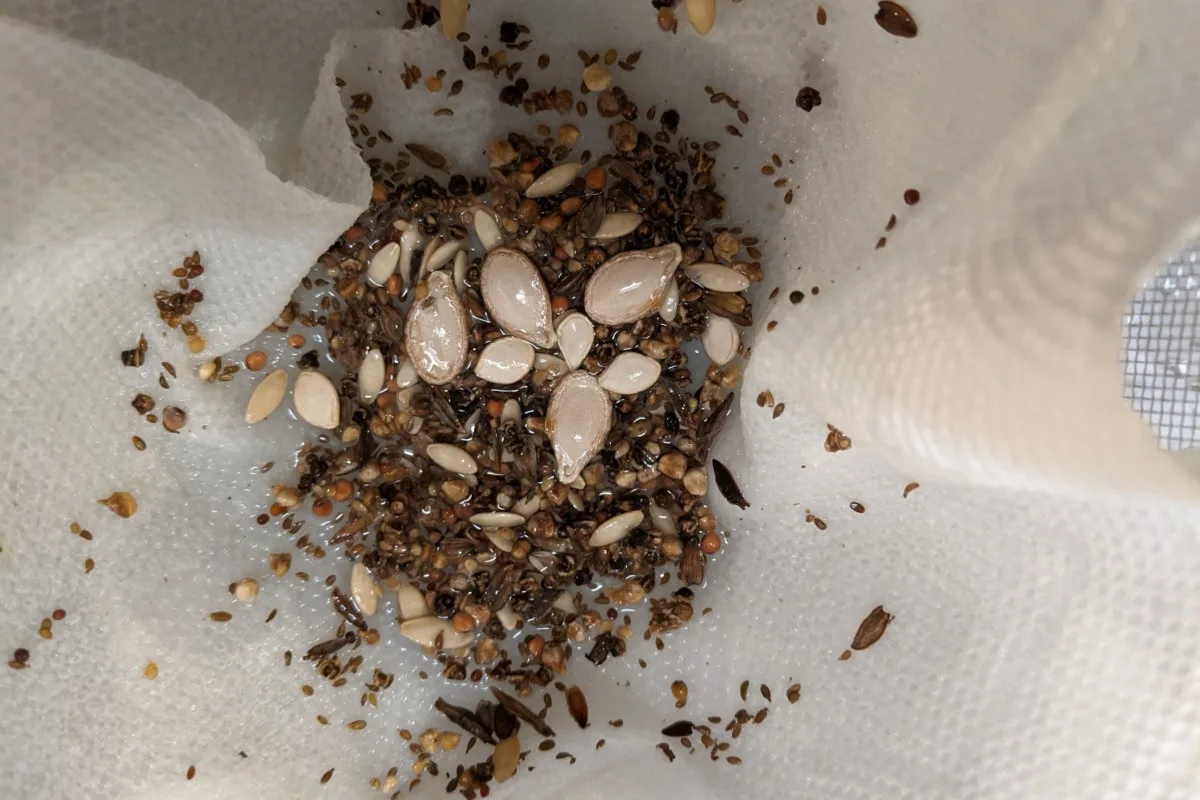
Now that your seeds have had a good soak dump out the water. You can use a coffee filter, paper towel or fine-mesh sieve to strain out the seeds. Pat them dry with a paper towel, then add them to a dry bowl. Add about a cup of potting soil and give everything a good mix. The soil helps assure a more even distribution of seeds.
Sprinkle your seed and potting soil mix evenly over the surface of your chaos plot. Finish by sprinkling the top with a fine layer of potting mix.
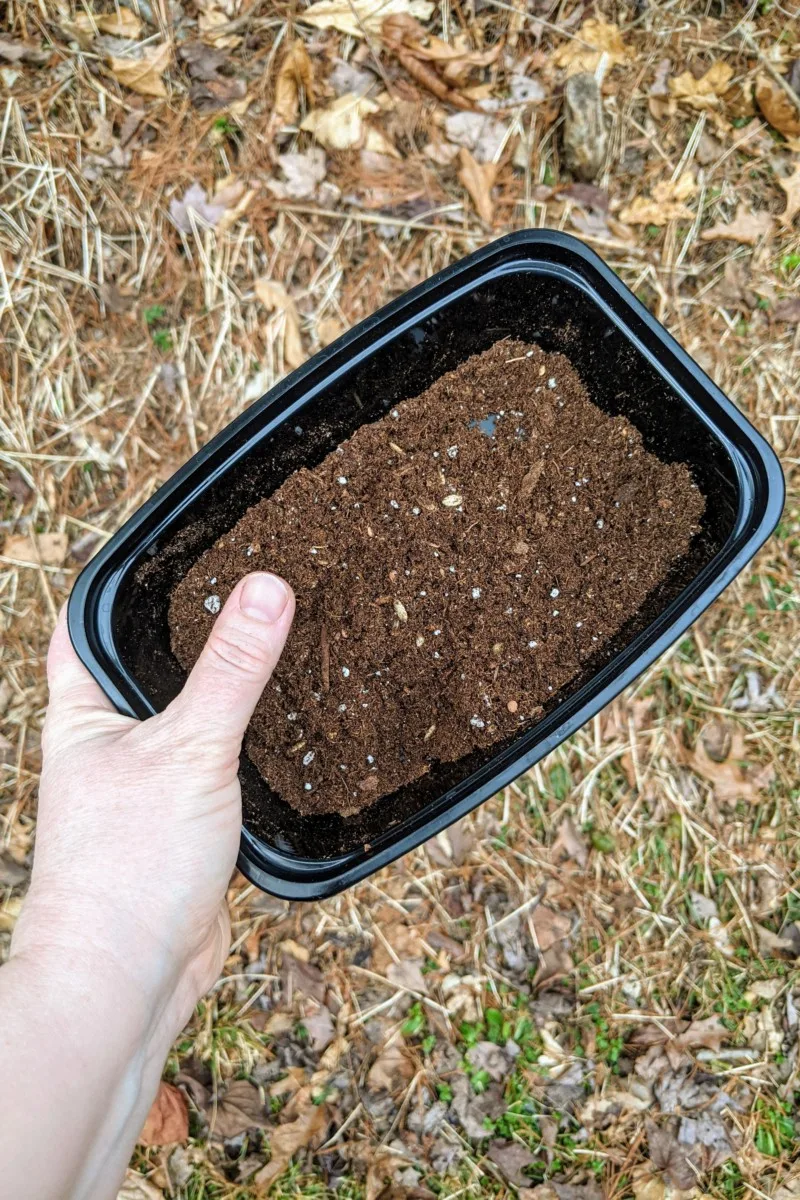
Go Hands-Free or All Hands on Deck
Once you’ve planted your chaos garden, you have a choice to make. Do you want to let chaos rule or give your garden a hand?
What I mean is this. You can truly embrace the notion of a chaos garden by letting it be once you’ve sown your seeds. Let nature have its way and embrace and enjoy everything that pops up or doesn’t. You may be surprised to see what kind of a harvest you can get from sitting back and doing nothing.
After all, anything this garden yields is a bonus.
Or…
You can opt to tend your little chaos garden in much the same way you would your normal garden. You may choose to water it when the weather doesn’t cooperate, fertilize it to give it a boost, even thin some of the seeds to give others a better chance. It’s entirely up to you.
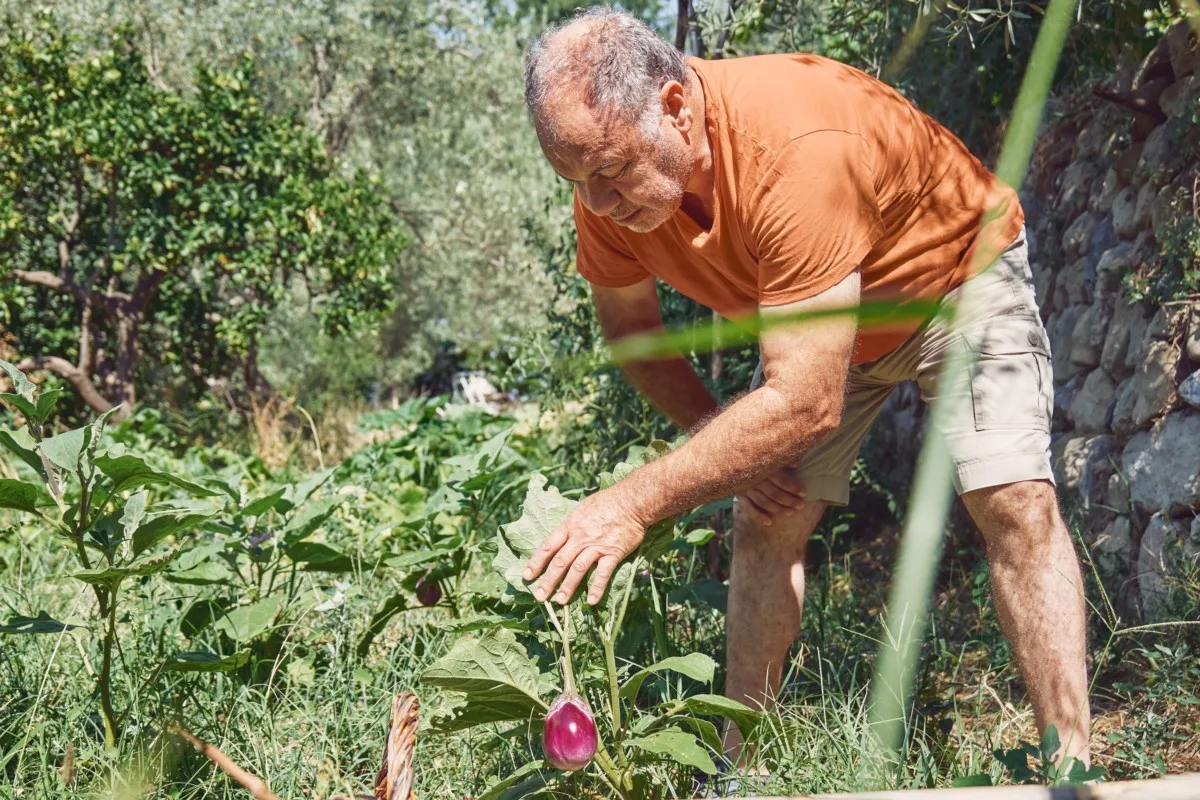
There Might Be Something to This
Whether you choose to tend (or not) your chaos garden, the end result may surprise you. Once you’ve hurdled the biggest question of will the seeds germinate, this tiny little habitat you’ve created is actually set up to do quite well all on its own.
Think about the way we grow things.
We generally stick to a form of farming known as monocrop agriculture. We grow lots of the same thing in the same area. While this makes sense if you’re trying to feed a nation, it’s not how Mother Nature does things.
Take a walk in any wild area, be it a forest, meadow or marsh, and you’ll see plenty of different plant species all growing within the same area.
Back in the 1800s, Charles Darwin’s “On the Origin of Species” speculated the importance of genetic diversity among grasses, and in 2013 a University of Toronto paper concluded that Mr. Darwin was right.
Through their experiment, the University of Toronto researchers found that “environments containing species that are distantly related to one another are more productive than those containing closely related species.” Basically, growing a more diverse selection of plants led to all the plants being healthier and more productive.
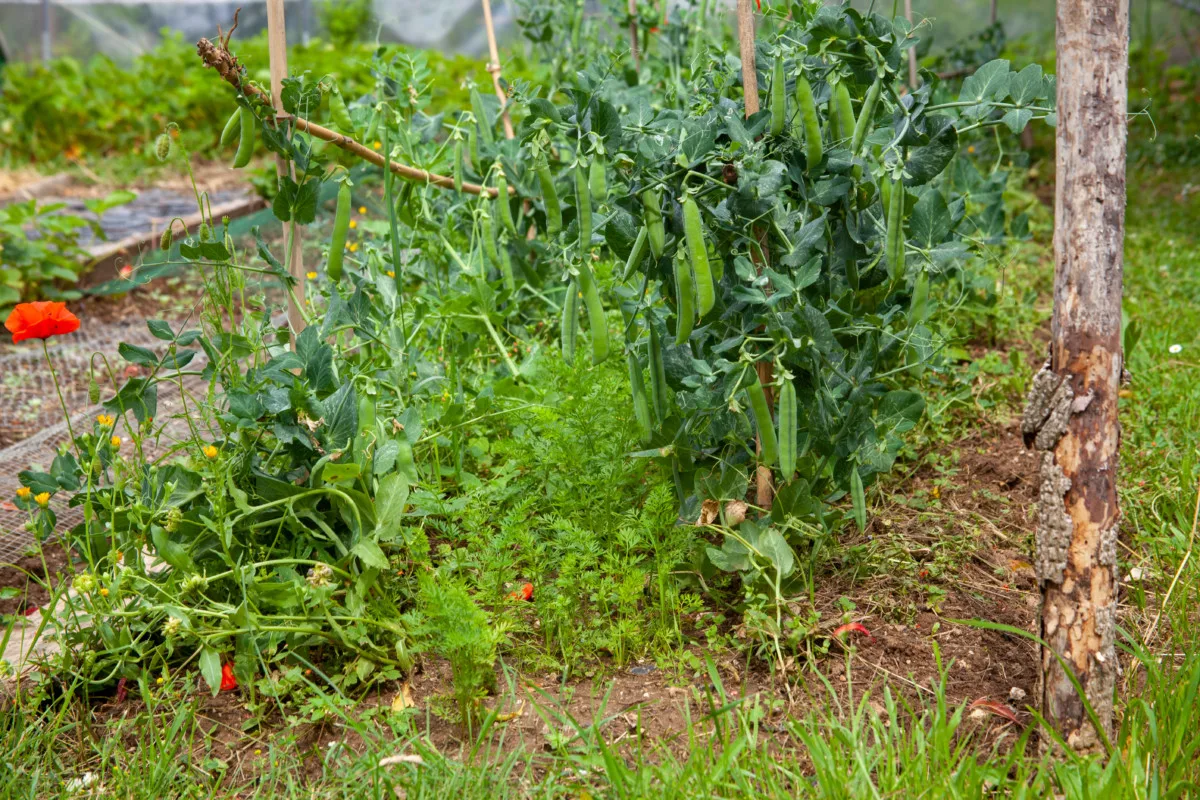
This is something many a gardener who uses companion planting can attest to. And when you think about it, the whole thing makes sense. Rather than having rows of the same plants that all need the same nutrients at the exact time from the soil, you have a variety of plants with varied needs growing together. With each plant needing different nutrients at different times, it makes sense that it would be less taxing on the soil and more beneficial to the plants.
And it doesn’t stop there.
Because you’re growing plants of varying heights and sizes, all close to each other, their natural variation in height assures that most of the competing weeds will be crowded out.
And again, because of the diversity, your entire garden ends up being more pest and disease resistant. Natural pest control in the form of predatorial insects are attracted to a more diverse plant environment that mimics nature. You’re less likely to have populations of pests within an area full of all different kinds of bugs.
It’s really quite a brilliant idea when you get down to it.
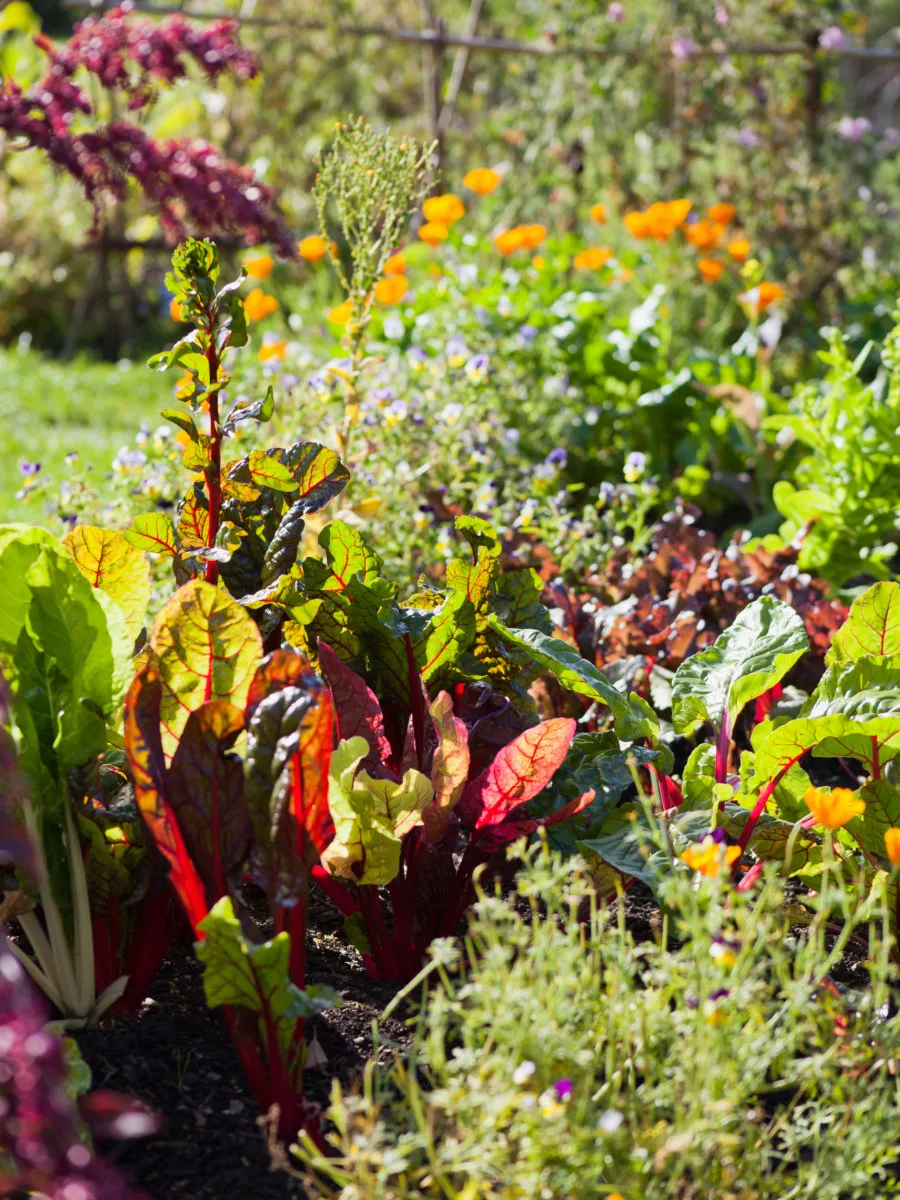
Who knows, you may end up having a bumper crop from your chaos garden full of seeds you were going to throw away.
Perhaps chaos gardening will be your preferred growing method in the future. It would certainly make for a more interesting-looking garden, that’s for sure.
If you’re ready for more chaos gardening, you’ll want to read this:
Homemade Wildflower Seed Bombs To Beautify Forgotten Landscapes
6 Reasons To Grow A Front Yard Vegetable Garden
7 Beginner-Friendly Permaculture Gardening Projects

Get the famous Rural Sprout newsletter delivered to your inbox.
Including Sunday ramblings from our editor, Tracey, as well as “What’s Up Wednesday” our roundup of what’s in season and new article updates and alerts.

